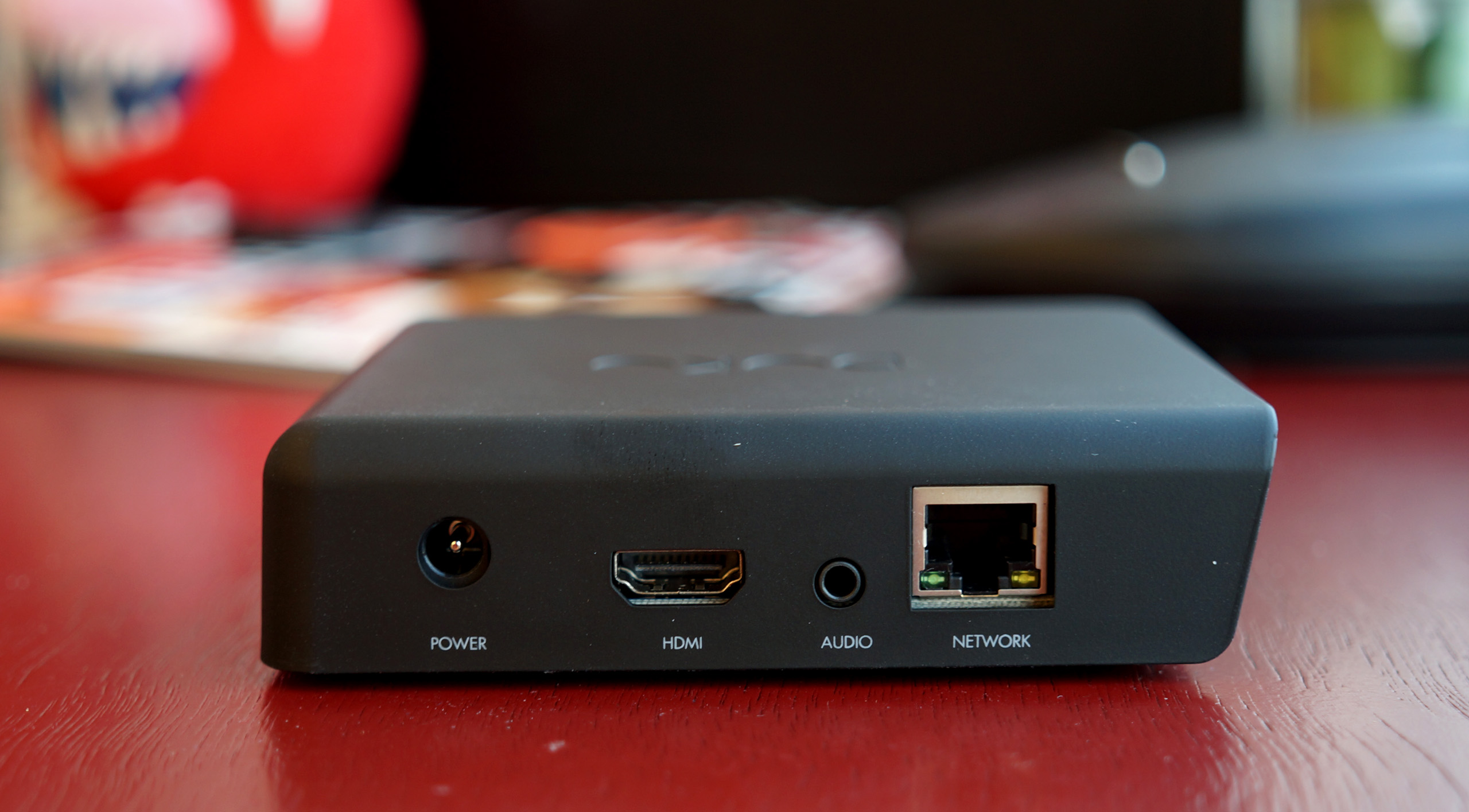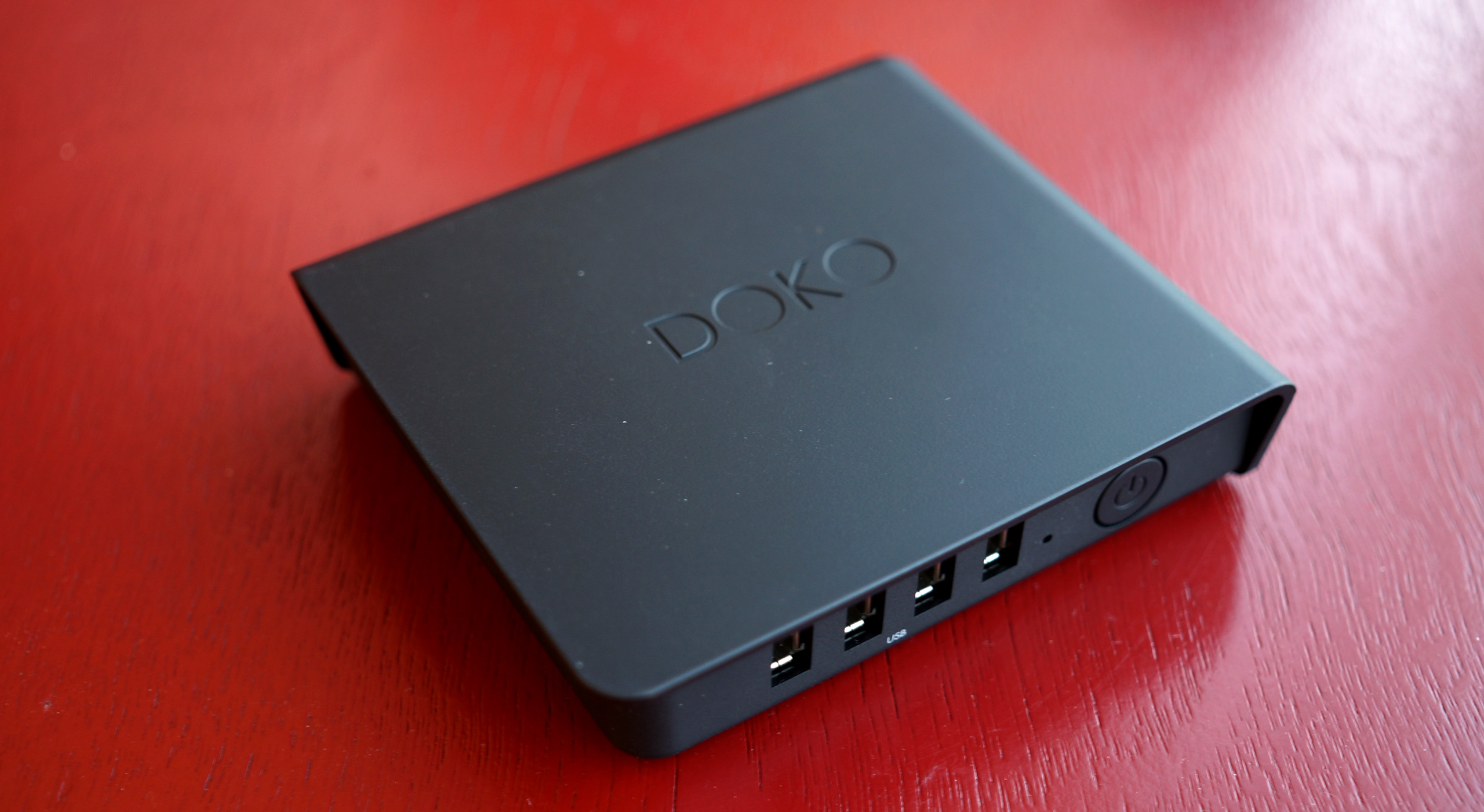Our Verdict
A simple device to get working, but it doesnt quite have the power to offer a consistent, or particularly enjoyable, gaming experience.
PC Gamer's got your back
I would really like to love the new mini-streaming device that NZXT have just launched, but as close as the bargain-priced Doko gets, it’s still a long way from being the perfect PC game streaming device. It makes me even more keen to see Nvidia make some decently-priced SHIELD Box, or for someone to deliver the perfect $100 box for Steam In-Home Streaming.
The basic premise for NZXT’s Doko is that it’s an incredibly thin client which sits beside your living room TV, plugged into both the panel and wired into your home network. It will then connect to any PC on that network running the Doko streaming software.
It’s genuinely that simple.
It took next to no time to set up the device—after a relatively short firmware upgrade—and find my desktop PC in another room in my apartment. Once the basic OS on the Doko box finds the machine it will then stream in 1080p exactly what your PC’s GPU is spitting out.
NZXT have partnered with MirrorOp and licensed their software to carry out the streaming magic. MirrorOp is fairly established in the streaming world, offering software to throw content from your PC or Mac (boo, hiss) to your phone or tablet or another PC. And it does work fairly well.
The tiny Doko box isn’t exactly packing the latest hardware though, with an ARM 11-based SoC doing the necessary decoding grunt work. The Prizm WM8750 is an 800MHz chip with a dedicated 1080p decoding engine. The device has 256MB RAM inside it and 8MB of storage for its tiny OS.
The best part about the Doko’s feature set: the four USB 2.0 ports on the front which act exactly as though you’re plugging directly into the remote PC it’s connected to. It uses a technology called USB over IP to get your streaming PC and USB devices talking. I used both mouse and keyboard and Xbox 360 wireless controller and dongle, as well as USB storage to watch video.
Keep up to date with the most important stories and the best deals, as picked by the PC Gamer team.
But it’s the low-end internal hardware NZXT have picked off the shelf that is the problem. It’s also likely to be the reason the Doko is only capable of streaming your gaming PC’s output at 30Hz.

For a lot of people, being limited to 30-frames-per-second is going to be a complete deal-breaker and I can understand why. That, however, is not the deal-breaker for me.
What is, though, is the fact the stream is simply not consistent enough to be able to game accurately on. If the 30Hz output ran consistently at that speed I probably wouldn’t have such a problem gaming on my telebox via the Doko. But when it’s unable to maintain the stream properly it will find you quickly shutting down and shifting back to gaming directly on your PC.
At first, I thought it might be a problem with my home network. But I've been happily playing Dying Light and Grim Fandango on my TV via the SHIELD Tablet on the same network, both at 1080p / 60Hz. It seems the Doko really didn’t like my home Powerline setup, making the experience a real struggle, with severe graphical artefacts occurring on-screen and with serious input lag on my mouse too.
To be fair, NZXT do recommend a direct connection between PC and router for optimum game streaming. But if your PC is in a different room to the screen you're looking to stream to—which is likely why you're after a streaming box in the first place—then it's not ideal trailing a physical cable through your home.
Even having the Doko wired into the same high-end router sat next to my review machine back in the office, the stream was still not at all consistent. Sure, it was better than over Powerline, with less lag and noticeably fewer artefacts, but still not enough to game on. Or even happily watch video either.
Even at just $100 (around £100 in the UK with international shipping) it still isn’t quite good enough. Value doesn’t mean something has to be cheap; it still has to be good at what it sets out to do. And even though it’s simple to set up and will genuinely stream anything your remote PC can do—a nice perk over other game-specific streaming solutions—you simply wont enjoy the experience enough to keep using the Doko.
It’s a bit of a shame, really. The NZXT Doko offers more versatility than Nvidia’s SHIELD Tablet, which will only connect to an Nvidia-powered PC, and allows you to access everything on your PC, from Steam to GoG to Origin, which is something Steam’s In-home Streaming cannot do. It's just that it can't do any of it as well.
I’d definitely like to see a version two from NZXT, with a hardware upgrade which will offer a 1080p stream at 60Hz and at a consistent rate. I know that would bump the price up a bit, but it would make for a much better Doko.
A simple device to get working, but it doesnt quite have the power to offer a consistent, or particularly enjoyable, gaming experience.

Dave has been gaming since the days of Zaxxon and Lady Bug on the Colecovision, and code books for the Commodore Vic 20 (Death Race 2000!). He built his first gaming PC at the tender age of 16, and finally finished bug-fixing the Cyrix-based system around a year later. When he dropped it out of the window. He first started writing for Official PlayStation Magazine and Xbox World many decades ago, then moved onto PC Format full-time, then PC Gamer, TechRadar, and T3 among others. Now he's back, writing about the nightmarish graphics card market, CPUs with more cores than sense, gaming laptops hotter than the sun, and SSDs more capacious than a Cybertruck.


